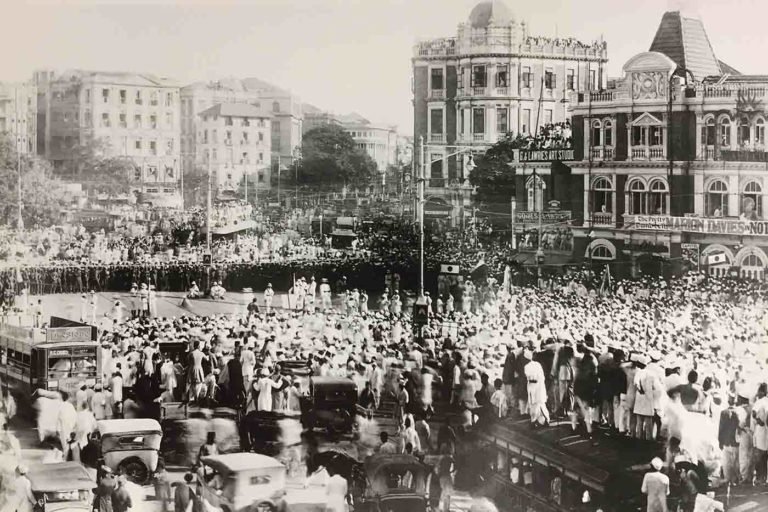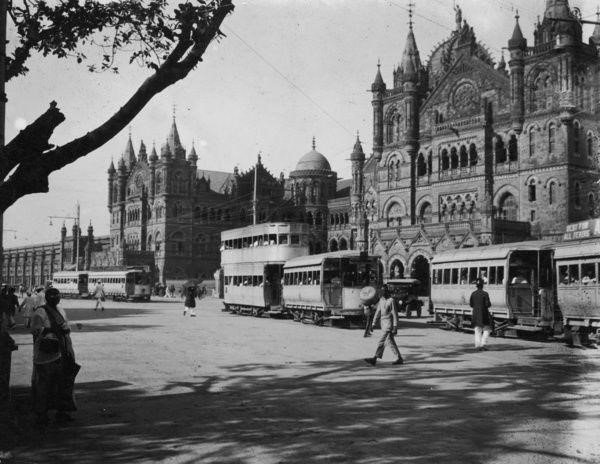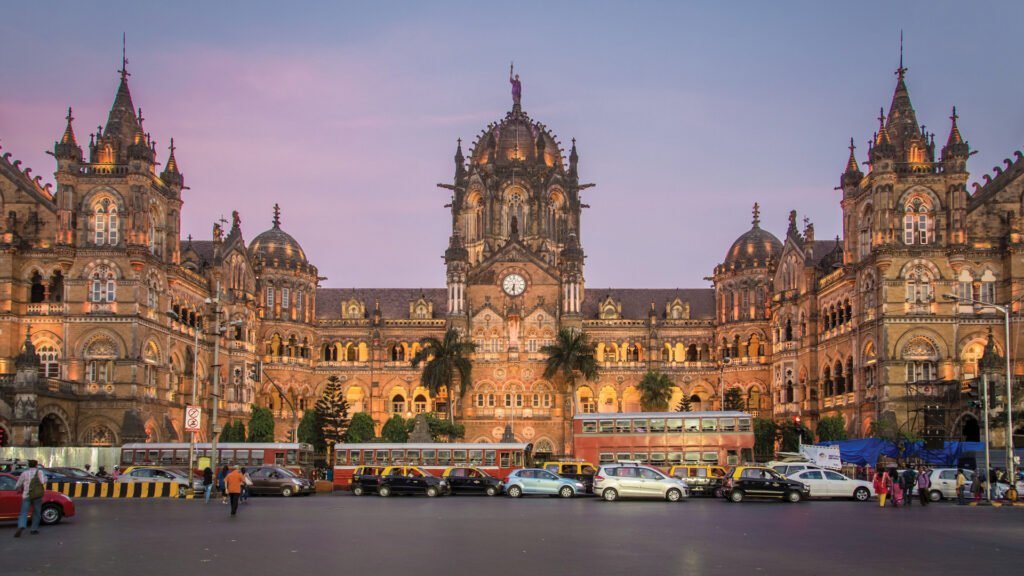Mumbai Then and Now
Mumbai Then
Mumbai, the capital of Maharashtra state in southwestern India, is a bustling metropolis and the country’s financial hub, located on the Arabian Sea.
The city’s name, “Mumbai,” has its roots in the local Koli community, derived from the patron goddess Mumbadevi and the Marathi word “ā’ī,” meaning “mother.”
While some historians trace the name to the goddess, others highlight its evolution over the centuries, with various spellings such as Mombayn, Bombay, and Bon Bahia appearing in historical records.
The Portuguese name “Bombay” became widely used after the English took control of the city in the 17th century.
The French traveler Louis Rousselet noted that the city’s name was often misattributed to the Portuguese term for “good bay,” overlooking its deeper cultural significance tied to the goddess Mumba.

By the late 20th century, “Mumbai” had emerged as the predominant name in several regional languages, culminating in an official change by the Indian government in November 1995 to recognize the city’s indigenous heritage.
This transformation reflects Mumbai’s rich history and its identity as a melting pot of cultures, languages, and traditions.
Related Article: Kuala Lumpur Then and Now
Mumbai History
Mumbai, originally an archipelago of seven islands, has a rich and complex history that dates back thousands of years.
The islands—Isle of Bombay, Parel, Mazagaon, Mahim, Colaba, Worli, and Old Woman’s Island—are believed to have been inhabited since the South Asian Stone Age, with evidence of habitation by the Koli fishing community emerging around the beginning of the Common Era.
The islands were part of the Maurya Empire in the 3rd century BCE, under the rule of Emperor Ashoka, and were referred to as Heptanesia by the Greek geographer Ptolemy in 150 CE.
Over the centuries, Mumbai came under the control of various indigenous dynasties, including the Satavahanas, Western Satraps, and the Shilaharas.
Related Article: Bangkok Then and Now

Significant Buddhist sites like the Kanheri and Mahakali Caves were excavated during this period.
In the late 13th century, King Bhimdev established Mahikawati (present-day Mahim) as his capital, and the islands subsequently fell under the influence of the Delhi Sultanate and later the independent Gujarat Sultanate.
The arrival of the Portuguese in the early 16th century marked a significant shift in the region’s control, culminating in the Treaty of Bassein (1534), which granted the Portuguese ownership of the islands.
They built churches and fortifications, contributing to the region’s European character.
Related Article: Seoul Then and Now
The English acquired the islands through marriage treaties and subsequent leases to the East India Company, which established Mumbai as a vital trading post.
By the end of the 17th century, with the British East India Company consolidating power, Mumbai began to evolve into a major commercial hub.
The construction of the Hornby Vellard causeway in the 18th century merged the seven islands into a single landmass.
The city grew rapidly during the 19th century, becoming a critical center for the cotton trade during the American Civil War and further benefiting from the opening of the Suez Canal in 1869.
Related Article: Tokyo Then and Now
The 20th century brought challenges, including the bubonic plague epidemic of 1896, and Mumbai became the focal point of the Indian independence movement.
After independence in 1947, the city underwent significant political restructuring and demographic changes, particularly following the Samyukta Maharashtra movement in the 1950s, which established the state of Maharashtra with Mumbai as its capital.
In subsequent decades, Mumbai faced challenges such as rapid urbanization, industrial decline, and violent communal riots. However, it emerged as India’s financial capital and continues to play a crucial role in the global economy.
Today, Mumbai is a vibrant metropolis known for its cultural diversity, economic opportunities, and resilience, navigating its past while shaping its future on the world stage.
Related Article: Hong Kong Then and Now
Mumbai Now

Mumbai, formerly known as Bombay, serves as the capital of Maharashtra and stands as the financial capital of India.
With a staggering population of approximately 12.5 million people, it is the most populous city in the country and a significant cultural melting pot.
The Mumbai Metropolitan Region, which encompasses the city and its surrounding areas, boasts a total population exceeding 23 million, making it the sixth-most populous metropolitan area globally.
Nestled along the Konkan coast, Mumbai’s strategic location offers a deep natural harbor, facilitating its status as a crucial hub for trade and commerce.
Related Article: Dubai Then and Now
In recognition of its global economic significance, Mumbai was designated an alpha world city in 2008, reflecting its influential role in international finance and culture.
Economically, Mumbai is the beating heart of India, functioning as the country’s commercial and financial center.
Its economy showcases a stark juxtaposition between immense wealth and significant poverty, reflecting the broader socioeconomic disparities present throughout India.
The city is home to a diverse range of industries, from high-tech sectors to traditional crafts.
Related Article: Singapore Then and Now
It houses the Indian Atomic Energy Commission, highlighting its advanced technological capabilities, yet many outskirts still depend on traditional energy sources, emphasizing the challenges of urban development.
Notably, Reliance Industries Limited, one of India’s largest conglomerates, has its roots in Mumbai.
This company spans various sectors, including petrochemicals, textiles, retail, and telecommunications, marking a significant achievement as the first privately-owned Indian enterprise to feature in the Fortune 500 list.
This dynamic economic landscape underscores Mumbai’s role as a powerhouse in the Indian economy while also pointing to the pressing need for equitable growth and development.
Related Article: Shanghai Then and Now
FAQs
Mumbai is renowned for its vibrant culture, diverse population, and significant economic influence.
It is famous for Bollywood, the Hindi-language film industry, which produces the highest number of films in the world.
The city is also known for its iconic landmarks such as the Gateway of India, Marine Drive, and the Chhatrapati Shivaji Maharaj Terminus.
Additionally, Mumbai is celebrated for its street food, bustling markets, and rich historical heritage.
Mumbai is generally considered one of the more expensive cities in India, particularly in terms of real estate and living costs.
While there are affordable neighborhoods and options for budget-conscious travelers, the overall cost of living, including housing, food, and transportation, can be high, especially in affluent areas.
The primary language spoken in Mumbai is Marathi, which is the official language of Maharashtra.
However, due to its cosmopolitan nature, Hindi and English are also widely spoken and understood, making communication accessible for both locals and visitors.
Delhi is larger than Mumbai in terms of area. The National Capital Territory of Delhi covers about 1,484 square kilometers, while Mumbai spans approximately 603 square kilometers.
However, Mumbai has a higher population density, making it the most populous city in India, whereas Delhi is the capital and a significant political and cultural center.






























